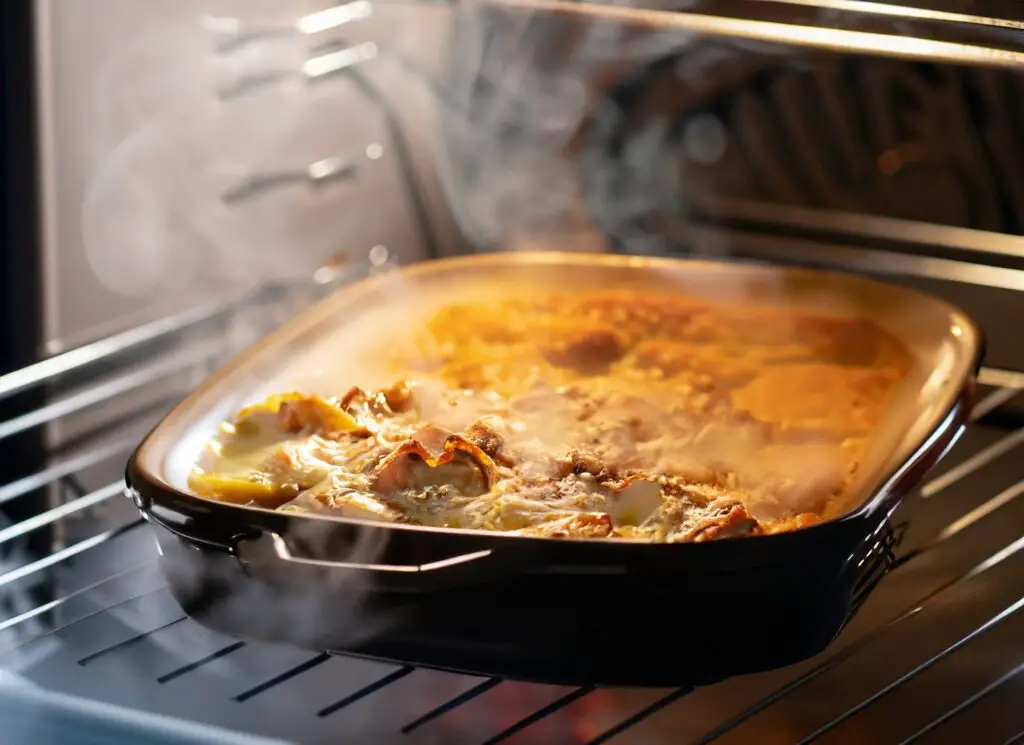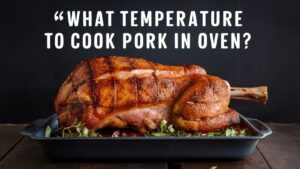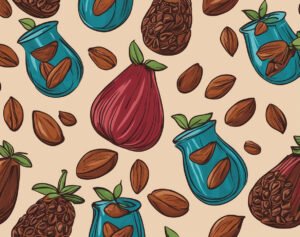Are you tired of serving cold or lukewarm food at your dinner parties or family gatherings? Don’t worry; I’m here to help. As an experienced chef and food safety expert, I understand the importance of keeping food at the right temperature to prevent the growth of harmful bacteria.
In this blog post, I’ll be sharing my knowledge and expertise on what temperature to keep food warm in the oven. Whether you’re a home cook, a professional chef, or simply someone who wants to ensure that their food stays warm and safe to eat, this article is for you.
What Temperature to Keep Food Warm in Oven?

To keep food warm in the oven, you can set the oven temperature to 200 to 250°F. If your oven has a “warm” setting, use that instead, which is usually 170 to 200°F. You can transfer the cooked food to a baking sheet, an oven-safe saucepan, or a baking dish and cover it with foil or a lid. If you’re warming plates for serving, stack them in an oven for 15 minutes at the lowest oven temperature, like 150 to 200°F.
If you need to keep the food warm for more than 15 or 20 minutes, check with an instant-read thermometer to be sure it is at least 140°F; if it is not, then increase the oven temperature a little. Keep in mind that if you try to keep the food warm for more than an hour or two, the texture of the food may change. Finally, make sure to check the temperature of the food every once in a while to make sure it doesn’t dip below 140°F.
How Long Can You Keep Food Warm in The Oven?
- Most hot foods can be stored in the oven for 15-20 minutes at an oven temperature of 200-250°F.
- Once the food is properly cooked, you can warm it and store it safely in the oven for up to 30 minutes.
- If you need to keep food warm for more than 15 or 20 minutes, check with an instant-read thermometer to be sure it is at least 140°F; if it is not, then increase the oven temperature a little. Keep in mind that if you try to keep the food warm for more than an hour or two, the texture of the food may change.
- Food left in a warmer for more than two to four hours loses its freshness and starts to dry out. The food has to consistently remain at a safe temperature of at least 140°F.
- If you need to keep food warm for very long, like more than two hours, it’s better to use a slow cooker or chafing dish instead of an oven.
Why It Matters: Avoiding Dryness and Ensuring Food Safety
The biggest challenge when it comes to keeping food warm in the oven is doing so without drying it out. Nobody likes dry and overcooked food! However, ensuring that the food remains at the correct temperature is also essential to prevent foodborne illnesses caused by bacterial growth. According to the FDA, food should be kept at 140°F (60°C) or above to remain safe to eat.
To ensure food safety, use a food thermometer to check the internal temperature of the food. Insert the thermometer into the thickest part of the food item, making sure not to touch any bones. The minimum internal temperature for meats, including beef, pork, lamb, and veal, should be 145°F (63°C), while poultry should reach 165°F (74°C).
Factors to Consider When Keeping Food Warm in Oven
There are several factors to consider when keeping food warm in the oven, such as the type and quantity of the food, the type of oven, and oven temperature.
Type of Food
Different types of food require different warming temperatures to remain moist and delicious.
Meat
- For sliced meats like beef or roast pork, keep the temperature between 150-160°F (66-71°C).
- For larger cuts of meat, like a whole turkey, keep it at a temperature of 165°F (74°C).
Vegetables
- Vegetables like broccoli, spinach, and kale can be kept warm at a temperature of 200°F (93°C).
Baked Goods
- Baked goods like bread, pastries, and desserts should be kept at a temperature range of 200-250°F (93.3-121°C).
Casseroles
- Casseroles or other starchy dishes like potatoes or rice dishes should be kept warm at around 325°F (163°C).
Quantity of Food
The quantity of food you’re warming also affects the temperature you should use. The more food you have in the oven, the lower the temperature should be to ensure it remains warm.
Type of Oven
The type of oven you’re using also plays a significant role in how you keep your food warm. Some ovens come equipped with a warming drawer feature that allows you to keep food warm without overcooking it. If your oven doesn’t have this function, you can use the “keep warm” or “warm” setting if available.
Oven Temperature
It’s essential to preheat your oven before placing the food into it. To avoid overcooking and drying out your food, keep the oven temperature between 200-250°F (93.3-121°C) to ensure it stays moist and delicious.
Recommended Temperature to Keep Food Warm in Oven
Here are some recommended temperatures for keeping different types of food warm in the oven:
| Type of Food | Temperature Range |
|---|---|
| Meat | 150-160°F (66-71°C) for sliced meats, 165°F (74°C) for larger cuts |
| Vegetables | 200°F (93°C) |
| Baked Goods | 200-250°F (93.3-121°C) |
| Casseroles | 325°F (163°C) |
Tips for Keeping Food Warm in the Oven
Keeping food warm in the oven is not just about setting the right temperature. Here are some additional tips to ensure your food stays moist and delicious:
1. Ideal Temperature and Holding Time
To hold most hot foods in the oven, keep the temperature between 200-250°F (93.3-121°C) and use a timer for 15-20 minutes. If you’re warming dishes that finish cooking at different times, remove them from the oven as they become ready.
2. Preventing Dryness
Prevent food from drying out by covering it with aluminum foil or using a moist heat method. You can also add moisture to the oven by placing a separate container with water inside while warming the food.
3. Using a Food Thermometer
Using a food thermometer is crucial to ensure that the food stays safe to eat while warming. Check the internal temperature of the food by inserting the thermometer into the thickest part of the food item to ensure it reaches the recommended minimum internal temperature.
4. Preheating the Oven
It’s crucial to preheat your oven before placing the food inside. This ensures that the oven reaches the desired temperature and that the food will cook evenly.
5. Avoid Overcooking
To avoid overcooking, remove the food from the oven as soon as it reaches the recommended minimum internal temperature and transfer it to a serving dish.
Final Thoughts
Keeping food warm in the oven is an essential part of any meal prep, whether you’re hosting a dinner party or preparing a family meal. By following these tips and guidelines, you can ensure that your food stays at the correct temperature, remains moist and delicious, and most importantly, safe to eat.
Remember to use a food thermometer to check the internal temperature of the food and adjust the oven temperature accordingly. Here’s a quick recap of the key information:
- Keep the food at or above 140°F (60°C) to prevent bacterial growth and ensure food safety.
- Use a food thermometer to check the internal temperature of the food.
- Different types of food require different warming temperatures. For example, sliced meats like beef or roast pork can be kept warm at a lower temperature ranging from 150-160°F (66-71°C), while whole fish or filets of fish need to be kept at a higher temperature range of 200-250°F (93.3-121°C).
- The quantity of food you’re warming affects the temperature you should use. The more food you have in the oven, the lower the temperature should be to ensure it remains warm.
- To avoid drying out your food, keep the oven temperature between 200-250°F (93.3-121°C).
- Use aluminum foil or a moist heat method to prevent food from drying out.
- Remember to preheat your oven before placing the food inside.
With a little practice and attention to detail, you’ll be able to serve warm, delicious meals every time!
FAQs Related to What Temp to Keep Food Warm in Oven
Will 170 degrees keep food warm?
Yes, 170 degrees will keep food warm. However, the food should be monitored to make sure it does not exceed the recommended temperature of 165-185 degrees for food to be safe for consumption.
Can food stay in 170 degree oven without burning?
Yes, food can stay in a 170 degree oven without burning. In fact, 170 degrees Fahrenheit is a good temperature to keep food warm without overcooking it.
How do you keep food warm for 2 hours?
Here are some ways to keep food warm for 2 hours:
1. Wrap with aluminum foil or towels: This is a simple and effective way to keep food warm. Wrap the food in aluminum foil or towels and be careful not to leave any holes where warm air can escape.
2. Use a cooler or insulated bag: A cooler or insulated bag can be used to keep food warm for a couple of hours. Heat the cooler first by pouring hot water into it and leaving it covered for 15-20 minutes. Then empty and dry the cooler. Line with hot wet towels for extra insulation or line with foil and then towels on top.
3. Use a preheated oven: According to Alice Henneman, MS, RDN with the University of Nebraska-Lincoln, you can keep foods hot in a preheated oven set to 200 °F – 250 °F.
4. Use heat packs: Place heat packs on the sides of your food container. Fill in the large spaces on each side of your food container. This will add more heat to the cooler and help your food stay at a reasonable temperature.
5. Use car seat warmers: If you are transporting takeout food, you can use your car’s seat warmers to keep it warm while driving home.
6. Check the temperature: For food that must be kept warm for more than 15 or 20 minutes, check with an instant-read thermometer to be sure it is at least 140 F; if it is not, then increase the oven temperature a little.
7. Use heated bricks: Line the bottom of your cooler with heated bricks or stones before placing your food inside. This will help retain heat and keep your food warm for longer.




